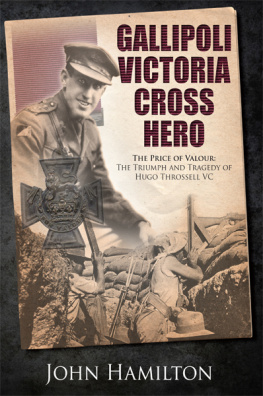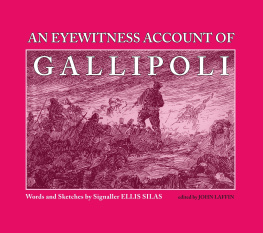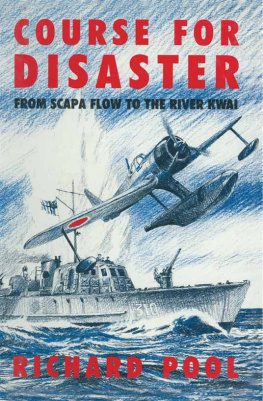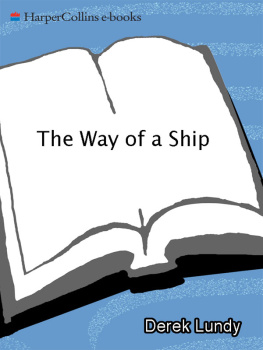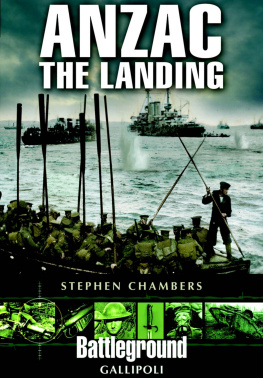Mr Midshipman VC
For Marnie
and
In memory of Jack Sillery
Mr Midshipman VC
The Short Accident-Prone Life of George Drewry, Gallipoli Hero
Quentin Falk
First published in Great Britain in 2018
by Pen & Sword Maritime
An imprint of Pen & Sword Books Limited
47 Church Street
Barnsley
South Yorkshire
S70 2AS
Copyright Quentin Falk 2018
ISBN 978 1 52672 624 7
eISBN 978 1 52672 625 4
Mobi ISBN 978 1 52672 626 1
The right of Quentin Falk to be identified as
Author of this Work has been asserted by him in accordance
with the Copyright, Designs and Patents Act 1988.
A CIP catalogue record for this book is
available from the British Library
All rights reserved. No part of this book may be reproduced or
transmitted in any form or by any means, electronic or mechanical
including photocopying, recording or by any information storage and
retrieval system, without permission from the Publisher in writing.
Pen & Sword Books Limited incorporates the imprints of Atlas,
Archaeology, Aviation, Discovery, Family History, Fiction, History,
Maritime, Military, Military Classics, Politics, Select, Transport,
True Crime, Air World, Frontline Publishing, Leo Cooper,
Remember When, Seaforth Publishing, The Praetorian Press,
Wharncliffe Local History, Wharncliffe Transport,
Wharncliffe True Crime and White Owl.
For a complete list of Pen & Sword titles please contact
PEN & SWORD BOOKS LIMITED
47 Church Street, Barnsley, South Yorkshire, S70 2AS, England
E-mail:
Website: www. pen-and-sword.co.uk
List of Illustrations
The four Drewry brothers in 1901: l-r: Percy, 11, Harry, 13, Ralph, 4, and George, 7. ( Heather Thorne )
Drewry family photo 1908: l-r: Harry, George, Thomas, Mary Ann, Ralph and Percy. ( Heather Thorne )
George (right) with oldest brother, Harry. ( Heather Thorne )
53 Kitchener (formerly Haslemere) Road, Forest Gate. ( Quentin Falk )
58 Claremont Road, Forest Gate. ( Quentin Falk )
The ships of George Drewry: SV Indian Empire ( Wrecksite.com ); SS Isis ( P&O Heritage Collection ); HMS Hussar ( Imperial War Museum ); HMS Conqueror ( MOD, Naval Historical Branch); HMT William Jackson (after being renamed SV Evelyn Rose ). ( Bernard McCall )
The River Clyde approaching V Beach. ( Stephen Chambers )
V Beach, today and, inset, April 1915. ( Quentin Falk/ Imperial War Museum .
Map of Cape Helles. ( John Fawkes )
George (head bandaged) with Dr Peter Burrowes Kelly after V Beach landing. ( Central News )
Map of Suvla Bay. ( John Fawkes )
View of A Beach, Suvla Bay, 2018. ( Quentin Falk ) / Landing at A Beach, August 1915. ( Norman Wilkinson )
Three middies on Imbros, August 1915. Officially captioned: l-r: George, Wilfred Malleson, Greg Russell. More likely Russell, Malleson, and Drewry. ( Imperial War Museum )
Among the crew with HMS Hussar officers, autumn 1916: top row l-r: Hewetson, Moore, Burton, Ellis; middle row: l-r: Giffard, Heneage, Hennessey; front row: l-r: George, Simeon, Fletcher. ( Heather Thorne )
George (right) off duty with fellow officers on Imbros. ( Imperial War Museum )
At the palace for his investiture, November 1916: l-r, Ralph (left) and George with their mother Mary Ann. ( Imperial War Museum )
Daily Sketch front page, November 22. ( John Frost Newspapers / Alamy Stock Photo )
Scapa Flow, 2018 and, inset, during the Great War. ( Angus Konstam / Orkney Library and Archive )
Portrait of a VC. ( Heather Thorne )
Last photo of George at the rail of HMT William Jackson , August 1918. ( George T. Drewry )
Georges body is horse-drawn into the City of London Cemetery, 10 August 1918. ( Imperial War Museum )
Georges grave at the City of London Cemetery. ( Richard Tedham )
Georges Sword of Honour presented by the Imperial Merchant Service Guild. ( Imperial War Museum )
Memorial window to George at All Saints Church, Forest Gate. ( Richard Tedham )
The VC Middies of the Dardanelles. ( Boys Own Paper )
George (foreground) with bandaged head during his VC action as featured in Deeds that Thrilled an Empire: Vol 1. ( N&M Press )
George in action. ( War Budget )
Cartoon from The Bulletin , 18 August 1915. ( Heather Thorne )
Detail of the hopper Argyle in the 1938 diorama of the V Beach landing. ( Imperial War Museum )
Front and back cover of The Hornet, 5 November 1966. ( DC Thomson & Co Ltd )
George T. Drewry, Georges oldest surviving nephew. ( Quentin Falk )
Centenary commemorative stone to George in Central Park, East Ham. ( Richard Tedham )
The author at Suvla Bay. ( John Mackenzie )
Introduction and Acknowledgments
When I arrived for the first time on the peninsula in May 2012, my knowledge of the ill-fated Dardanelles campaign was principally informed by repeated viewings down the years of Gallipoli , Peter Weirs beautifully crafted and movingly acted, if highly sentimentalized, Anzac version of events which was released to deserved acclaim in 1981.
Coincidentally, I happened to be in South Australia during its much-anticipated production and, although some scenes of pre-battle training were filmed in Egypt, the blood-spattered beaches, gullies and ravines of 1915 were actually recreated about 400 miles from Adelaide, by the seaside and on the cliffs in and around Port Lincoln, including a cove that has now been re-named Gallipoli Beach.
However, while the actual authenticity of Weirs rather fine film is perhaps a little dubious, the real-life sacrifice of more than 44,000 Allied dead almost double that on the Turkish side in an eight-month campaign still remains palpable more than a century after the events.
Among the 22,000 fatalities of the British Empire, excluding Anzacs which accounted for fully half that number was my wifes great uncle, Major John Jocelyn Doyne Sillery (known as Jack) of the 11th Battalion, Manchester Regiment, who landed at Gallipoli on 6 August. It was a mission to try and find his memorial that had first drawn us to this battlefield tour.
In 1915 the 11th Manchesters were part of 34 Infantry Brigade. On that early August day, a little over three months after the campaigns first amphibious landings had taken place, the 11th embarked on lighters and was towed by destroyers to Suvla Bay, on the west side of the peninsula, about 5 miles beyond Anzac Cove. They grounded 200300 yards north of Lala Baba, a fortified post held by the Turks at the south of the bay.
The landing was extremely difficult since they were in about 6ft of water, and every man had to be got ashore by means of a rope held by two officers, one on the lighter and one in the water.
According to the Manchester Regiment website: Major Sillery landed first in order to collect the men as they came ashore, and other officers were landed at intervals. The landing was carried out under heavy rifle fire from Lala Baba and shrapnel fire from further inland. When the disembarkation had been completed the C.O. found the battalion resting on the beach with bayonets fixed, and ready to move against the ridges to the north of the bay



